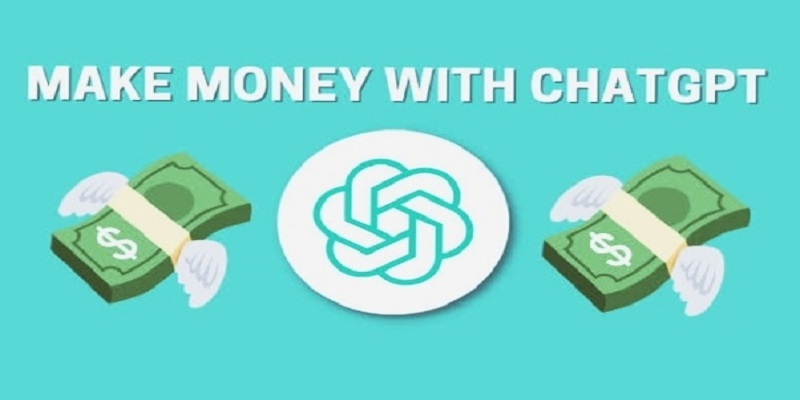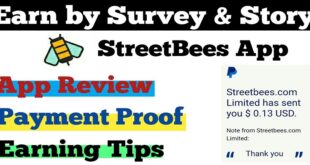Since OpenAI began to launch ChatGPT Things have significantly changed in the tech world. Its OpenAI Large Language Model (LLM) is powerful enough to accomplish a multitude of things that require creativity, such as writing essays, number crunching programming, writing code and so on.
Users are currently making use of ChatGPT’s incredible AI capabilities to earn money from home. You can easily make use of ChatGPT as well as its other alternatives to create applications and services without having any experience in programming languages. It is also employed to market affiliate products, launching new ventures, as well as much more. To learn more about how to earn money from ChatGPT check out our comprehensive article here.
Get Business Ideas From ChatGPT
To earn money with ChatGPT You must utilize it to the maximum extent. If you’re not aware, ChatGPT is good at coming up with new ideas to earn the passive source of income. For instance, you can use the following prompt within ChatGPT to inquire questions about side hustle ideas depending on your preference.
How to Use ChatGPT for Blogging
So, without further delay we will walk you through the use of ChatGPT to create blog posts.

1. Create a Content Plan
The first step to start the blog is to identify your audience and subject to assist you in choosing the topics you want to write about. We recommend choosing a area that you’re interested in – this makes it more easy to attract readers and be more enjoyable to write about.
Also Read: How to Earn Money Online with Jobs
The most popular blog niches are gaming, technology travel, fitness, and food. Once you’ve decided, ask ChatGPT to help you brainstorm ideas for content and topics related to your particular niche.
2. Research Keywords
Keyword research is the process of studying queries that users make on search engines to locate the information they want. The practice of search engine optimization (SEO) method ensures that your content will be found by the appropriate target audience.
Instead of having to determine the keywords on their own, ChatGPT lets you generate keywords in bulk by analyzing your blog’s title. Be sure to indicate whether you’d like long or short-tail keywords in order to ensure a more precise output.
But, ChatGPT isn’t able to provide data on keywords including their searches, trends and their difficulty. These crucial metrics can aid in ensuring your blog is ranked higher on search engine results webpages (SERP).
3. Analyze Content Gap With Competitors
In SEO, the term “competitor analysis” refers to looking at the keywords used by posts that rank high external links, keywords, as well as the quality of their content, to find the gaps in your blog’s content. It can help you come up with suggestions for a more efficient SEO strategy to increase your blog’s ranking on SERPs.
Traditionally, you have to read competitor’s articles and study the keywords they use with SEO tools such as Google Search Console or Ahrefs. ChatGPT allows you to complete these tasks with a single prompt.
4. Build Topic Clusters
Topic clusters refer to posts on your blog that have relevant keywords and topics. They offer contextual support as well as extensive coverage of your content, thereby helping to fulfill the user’s search requirements more efficiently.
Also Read: How to Get Free 60 GB Free Data on All Sims
The clustering feature lets your keyword be able to cover a wider range of search terms instead of just a particular area. For example”best beginner cameras” and “best beginner cameras” and “best mirrorless cameras” topics are both based on the “best cameras” keyword.

Achieving more search-related intents will help to increase organic traffic to your site and boosts the ranking of your blog. The ability to cover subtopics in your blog will also allow you to create solid site structure through internal linking.
5. Make a Blog Post Outline
After you have planned the content, you can create an outline of your blog post and organize your posts around it. For help, take into consideration the following points when preparing the structure of your post:
- Length. The number of words within each part on your blog.
- Headings. The number of headings that appear in your article and its contents.
- Content. Keywords and content to be included in every section.
- Flow. The interconnections and coherency of every heading, from high to low.
ChatGPT allows you to create an entire outline of your blog post by using the title as a prompt. You can also specify the keywords you would like to include and it will suggest titles where to put them.
6. Generate Full Content
After you have created the outline for your blog post Expand each section until you have the complete content. You must create each section separately as ChatGPT can only write around 500 words per output.
Also, you should include keywords for each input so that the chatbot can recognize the context and allow it to automatically insert them.
While the creation of SEO-friendly content using ChatGPT is an enormous time saver, we wouldn’t recommend it due to the possibility of facts and plagiarism issues. If you are using the AI Content Generator, think about these guidelines:
- Do not depend in artificial Intelligence. AI-generated content is often lacking personal touch and uniformity. To create original content you can use ChatGPT solely to aid the writing process.
- Renew outputs. ChatGPT lets you send the same prompt again to generate a different output. Utilize this feature to create multiple references in order to write quality content.
- Make sure to specify. AI-powered tools rely on data analysis and depend on inputs from users in order to create content. The prompts are detailed and provide ChatGPT with more details to create higher quality output.
- Double-check the HTML0 code manually . AI writing tools typically create content with ambiguous facts and the originality. Before you publish, make sure to make sure to proofread and edit the content manually.




